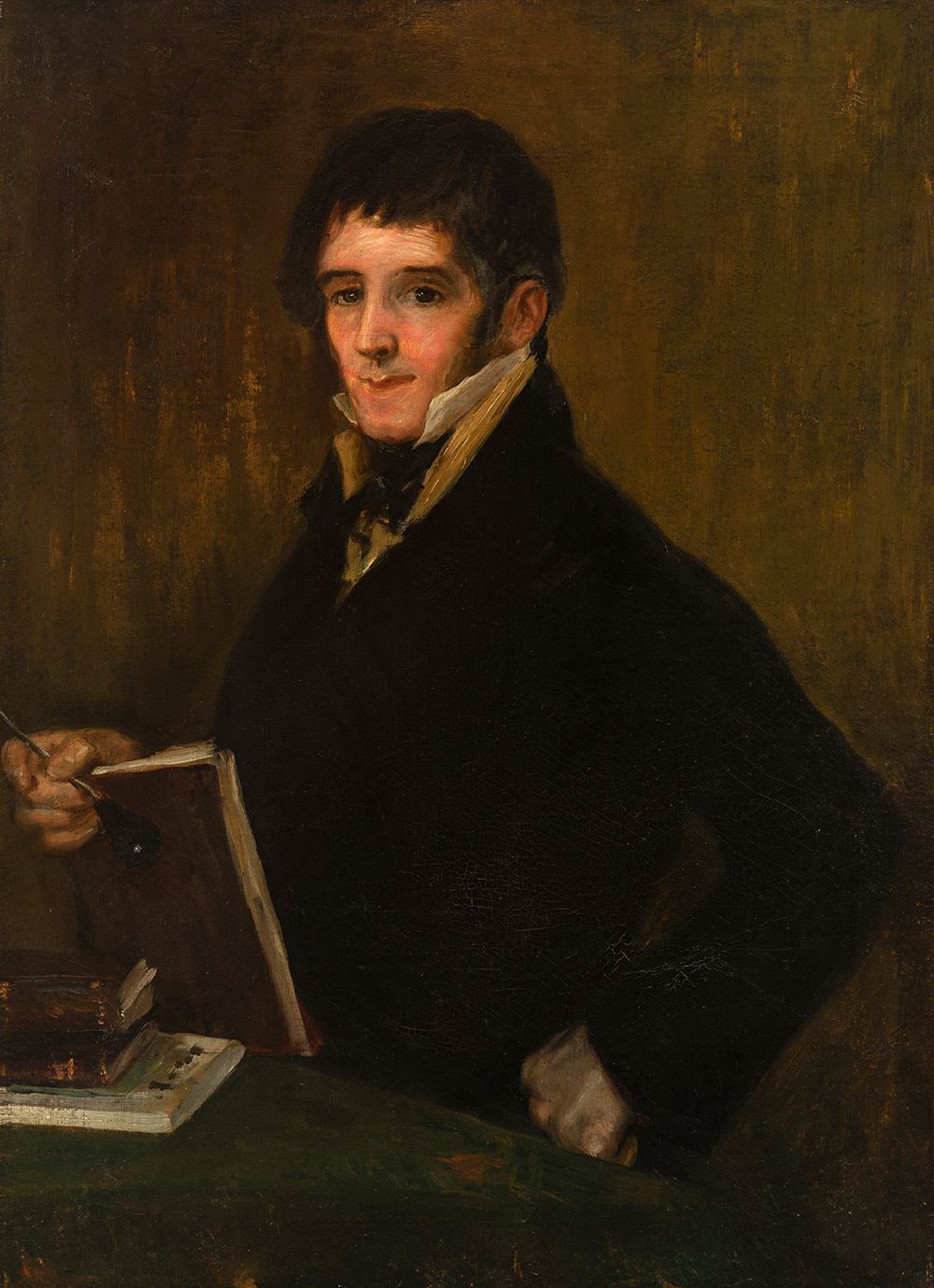Description
Spanish school; first half of the 19th century.
Spanish school; first half of the 19th century. "Portrait of the engraver Rafael Esteve". Oil on canvas. It has an inscription on the back of the attribution of Don Estévez Lorenzo to Francisco de Goya. Measurements: 90 x 65,5 cm; 104 x 77 cm (frame). This work faithfully follows the portrait of the engraver Rafael Esteve, painted by the Aragonese master Francisco de Goya y Lucientes, which currently belongs to the Museum of Fine Arts in Valencia. This is where it ended up, after being donated by the portrait's descendants to the Royal Academy of San Carlos in Valencia in 1818. In the work, the engraver can be seen sitting on a yellow upholstered chair next to his table. In his right hand he holds the burin and in this work an artist's notebook, instead of the copper plate he holds in the portrait in the Valencia Museum. The upright attitude of the sitter is striking, indicating his pride in his profession, as well as his artistic relevance. His black coat, white shirt and tie lend a sobriety that contributes to the idea of his social position. In addition, his face looks directly at the viewer with a slight smile, showing his confidence and social recognition. The work not only reflects aspects of Goya's mastery, but also shows the great friendship that existed between the painter and the engraver, who met thanks to Agustín Esteve y Martín, Rafael's cousin, with whom Goya had worked. This relationship was established on a personal and even professional level, as it is believed that Rafael Esteve worked with Goya on the series of engravings of the Tauromaquia. In addition, Goya portrayed the engraver on several occasions, an example of which is another work in the Museo Lázaro Galdiano, which belonged to the artist's goddaughter Rosario Weiss. Rafael Esteve (Valencia, 1772 - Madrid, 1847) belonged to a family of artists. His father was the sculptor José Esteve Bonet and his uncle, the painter Agustín Esteve. He received his artistic training at the San Carlos Royal Academy of Fine Arts in Valencia, but later moved to Madrid, where he continued his studies at the San Fernando Royal Academy of Fine Arts. During the reign of King Charles IV, he collaborated with the royal intaglio artists. In 1799 he was appointed Court Engraver and produced portraits of the Royal Family, based on drawings by his uncle Agustín and Francisco Goya. During the War of Independence he lived in Cadiz. Once the war was over, he was able to fulfil his wishes to continue his education in France and Italy. In 1839, he received the greatest honour of his career in the form of a gold medal at the Exposition des produits de l'industrie française. He was also decorated with a cross in the Order of Charles III and appointed Honorary Director of the Academy of San Carlos and "Academician of Merit" at the Academy of San Fernando and a corresponding member of the Academy of Paris.
39
Spanish school; first half of the 19th century.
